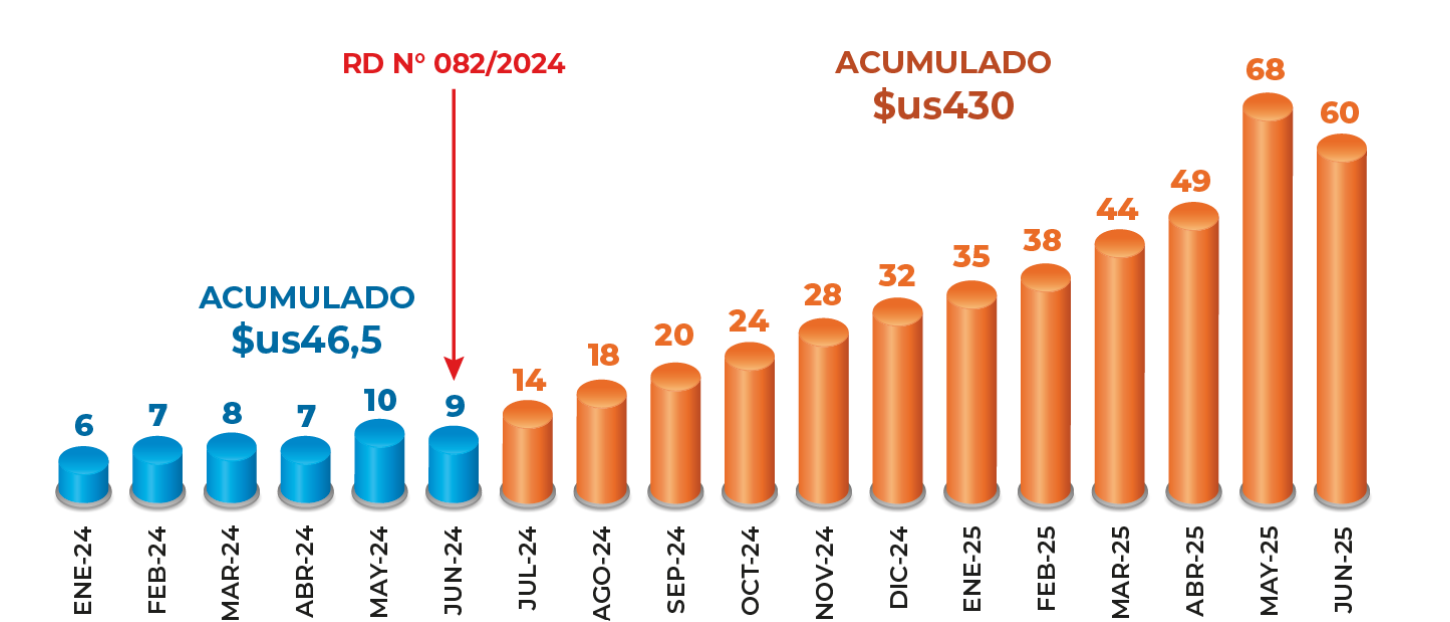Bolivia’s Surge in Cryptocurrency Payments: A New Financial Era
In the past year, Bolivia has witnessed a remarkable escalation in cryptocurrency transactions, achieving over US$430 million (approximately AU$658 million). This 630% increase follows the implementation of Resolution 082/2024, which permits financial institutions and state-operated companies like YPFB to engage in cryptocurrencies, particularly amidst ongoing dollar shortages within the country.
According to the latest statistics from the Central Bank of Bolivia, individual users conducted more than 10,000 transactions amounting to BOB 611 million (around US$88 million or AU$134 million) by the end of May 2025. Notably, retail participants accounted for 86% of all transactions, predominantly using cryptocurrency platforms such as Binance and Tether to safeguard their assets against the declining value of the boliviano. Given that the reported figures from the authorized Supervisory Authority of Financial Entities (ASFI) only capture formal exchanges, it is likely that informal peer-to-peer transactions further inflate the true total.
The infographic below illustrates this trend, showcasing a dramatic rise in crypto payments from US$46.5 million (AU$71 million) early in 2024 to US$294 million (AU$450 million) during a similar period this year. The significant growth can be attributed to the regulatory changes enacted last June through Resolution 082/2024, which allows banks to streamline customer orders directly to crypto exchanges. Subsequently, in March, the government’s endorsement for YPFB to utilise cryptocurrencies for fuel importations highlighted the necessity of such adaptations in response to ongoing dollar and fuel shortages.

Source: BCB
The increase in operations indicates that Resolution 082/2024 is successfully encouraging commercial activities and facilitating international transactions at competitive costs for users. Simultaneously, the central bank is enhancing its oversight by releasing quarterly data regarding cryptocurrency exchange rates. Furthermore, the tax authority, SIN, is aligning wallet records with VAT documents, urging banks to report crypto transactions daily and ensure compliance with OFAC sanctions. While 27 accounts have been flagged for examination, no penalties have yet been imposed.
Importantly, users must be vigilant as cryptocurrencies held in custodial wallets do not come under deposit insurance protection. In the event that an exchange collapses, users risk losing their funds. To combat misinformation and scams proliferating on platforms like WhatsApp, local authorities have stepped up efforts by conducting workshops focused on secure storage practices, offline key management, and identifying fraudulent investment schemes.
In conclusion, Bolivia’s rapid adaptation to cryptocurrency usage highlights a significant shift in its financial landscape, driven by regulatory reforms and the pressing need for alternative financial solutions amidst economic challenges. As the landscape continues to evolve, participants must navigate this new terrain with increased awareness and caution regarding security and regulations.

